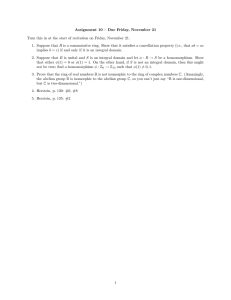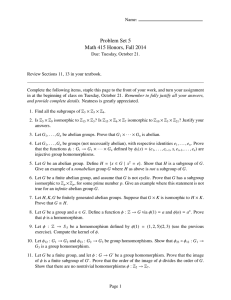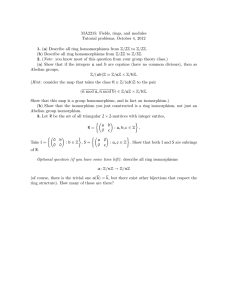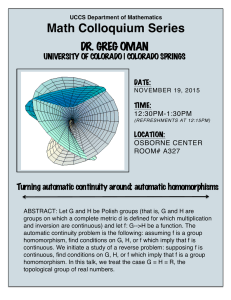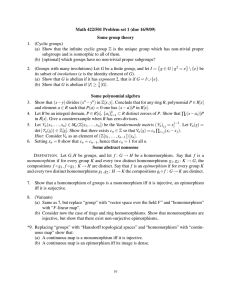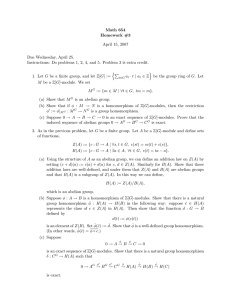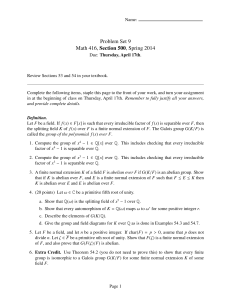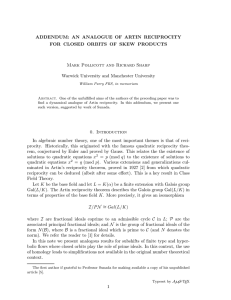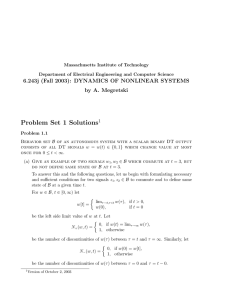MATH 422-501 Assignment 2
advertisement
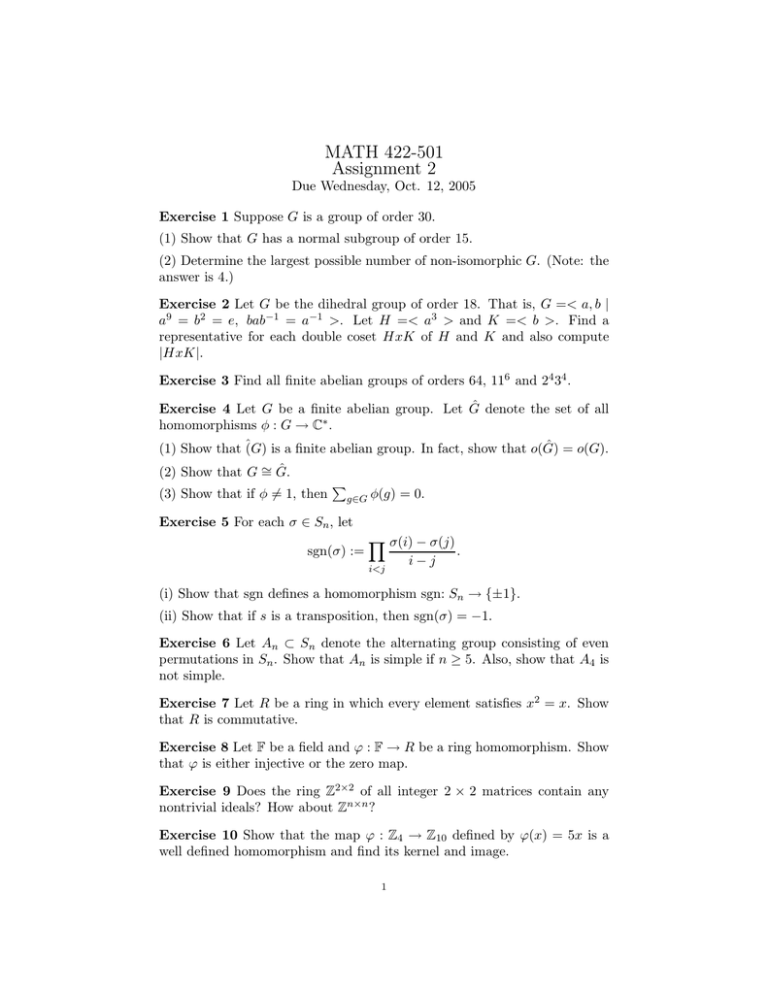
MATH 422-501
Assignment 2
Due Wednesday, Oct. 12, 2005
Exercise 1 Suppose G is a group of order 30.
(1) Show that G has a normal subgroup of order 15.
(2) Determine the largest possible number of non-isomorphic G. (Note: the
answer is 4.)
Exercise 2 Let G be the dihedral group of order 18. That is, G =< a, b |
a9 = b2 = e, bab−1 = a−1 >. Let H =< a3 > and K =< b >. Find a
representative for each double coset HxK of H and K and also compute
|HxK|.
Exercise 3 Find all finite abelian groups of orders 64, 116 and 24 34 .
Exercise 4 Let G be a finite abelian group. Let Ĝ denote the set of all
homomorphisms φ : G → C∗ .
(1) Show that ˆ(G) is a finite abelian group. In fact, show that o(Ĝ) = o(G).
(2) Show that G ∼
= Ĝ.
P
(3) Show that if φ 6= 1, then g∈G φ(g) = 0.
Exercise 5 For each σ ∈ Sn , let
sgn(σ) :=
Y σ(i) − σ(j)
i<j
i−j
.
(i) Show that sgn defines a homomorphism sgn: Sn → {±1}.
(ii) Show that if s is a transposition, then sgn(σ) = −1.
Exercise 6 Let An ⊂ Sn denote the alternating group consisting of even
permutations in Sn . Show that An is simple if n ≥ 5. Also, show that A4 is
not simple.
Exercise 7 Let R be a ring in which every element satisfies x2 = x. Show
that R is commutative.
Exercise 8 Let F be a field and ϕ : F → R be a ring homomorphism. Show
that ϕ is either injective or the zero map.
Exercise 9 Does the ring Z2×2 of all integer 2 × 2 matrices contain any
nontrivial ideals? How about Zn×n ?
Exercise 10 Show that the map ϕ : Z4 → Z10 defined by ϕ(x) = 5x is a
well defined homomorphism and find its kernel and image.
1

